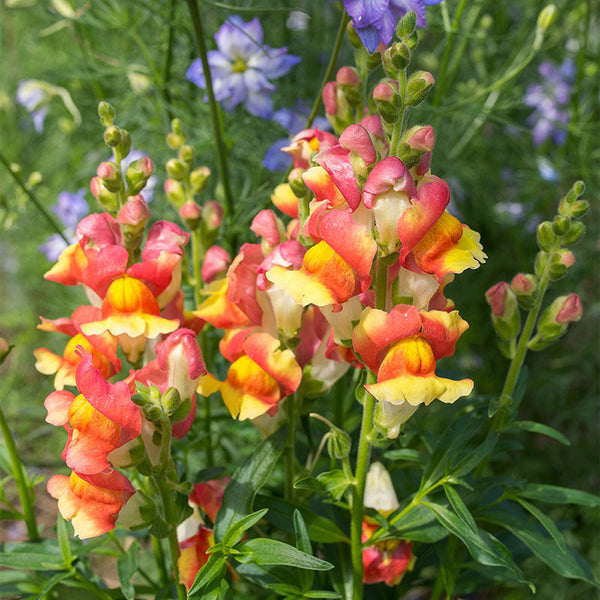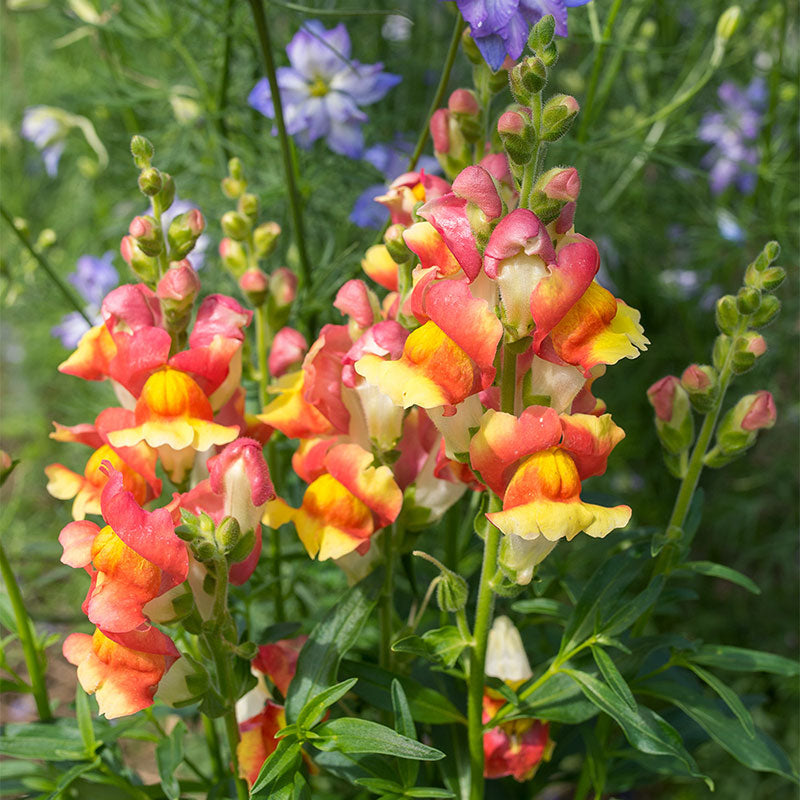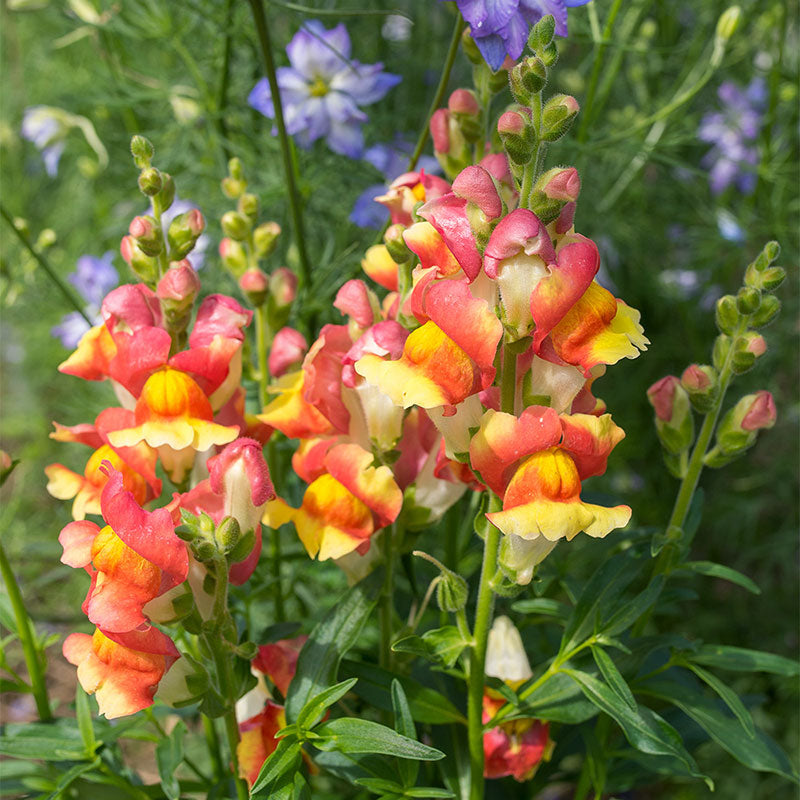SOWING INSTRUCTIONS
Depth:
Chill seed 2 days in refrigerator before sowing. Sow thinly on surface and lightly press in, as they require light to germinate.
Seed To Bloom:
12-14 weeks
Starting Indoors:
Recommended. Start in containers 8-10 weeks before last spring frost. Keep at about 60-70°F. A mix specifically for seed germination with added vermiculite is the preferred growing medium to prevent fungal problems. Water only from below by setting containers in a tray.
Starting Outdoors:
Direct sow in spring, 1-2 weeks before last frost for late summer to fall bloom. Mix seeds with fine sand and sow thinly.
WHEN TO SET OUTSIDE
After last spring frost, or in autumn in zones 8+
PLACEMENT & CULTIVATION
Compact snapdragon selections are a great addition to summer gardens, whether placed mid-border, at garden edges, or in containers. They add a striking vertical element and are easy to manage. These plants are excellent for cutting, blooming throughout the summer in areas where the nights are cool, and in late spring and fall in hotter regions. To encourage bushy growth and a profusion of blooms, pinch the plants when setting them out. Native pollinators, such as bumblebees, are fond of snapdragons, and their weight can open the hinged flower to access the rich nectar and pollen. The bees carry this golden dusting to the next blossom, fertilizing the plant. After the first flush of blooms, deadhead or shear the plants back and fertilize them for renewed flowering in the fall.
Watering Details:
About 1" per week, moderate tolerance to dry soils once established.
Soil pH:
Prefers neutral but will tolerate slightly acidic to slightly alkaline
Fertilizer:
Fertilize with an organic flower fertilizer monthly.
Diseases & Pests:
Aphids may be an issue—hose down plants with a heavy stream of water regularly until the pest is gone. Place in an area with good circulation to prevent fungal problems. If such issues do arise, plants can be sprayed with an organic fungicide.
When to Cut for Bouquets:
Harvest when 1/3 of the florets are open.
































